Iris Dutch: varieties, planting and care
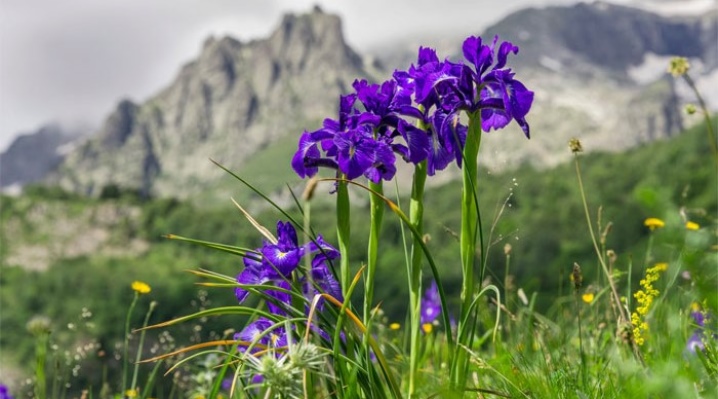
The variety of garden flowers is simply amazing. The Dutch iris, which is very popular today, simply mesmerizes with its beauty and bright riot of colors. We will talk about how to grow this flower correctly, how to care for it, and also about its varieties in this article.
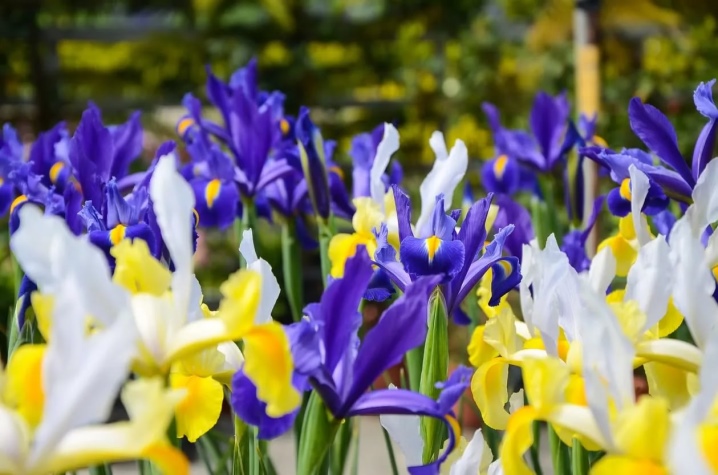
Description
The Dutch iris is a flower that belongs to the general group of iris plants. They have a unique bulbous root system. Each onion is a kind of miniature living bottle, the height of which reaches 7 cm. Every year, before the start of the active growth phase, thin filamentous roots appear from the bulb, which die off after flowering.
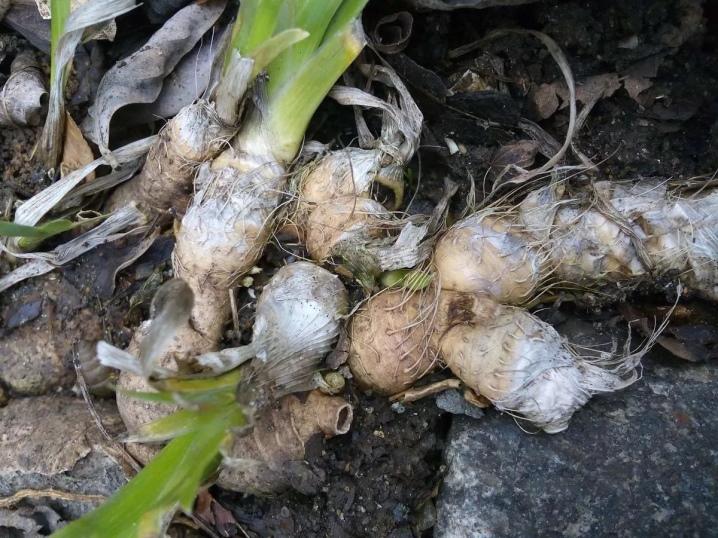
The peduncle of plants can reach 0.8 m in height. The leaves are flat and pointed, smooth to the touch.
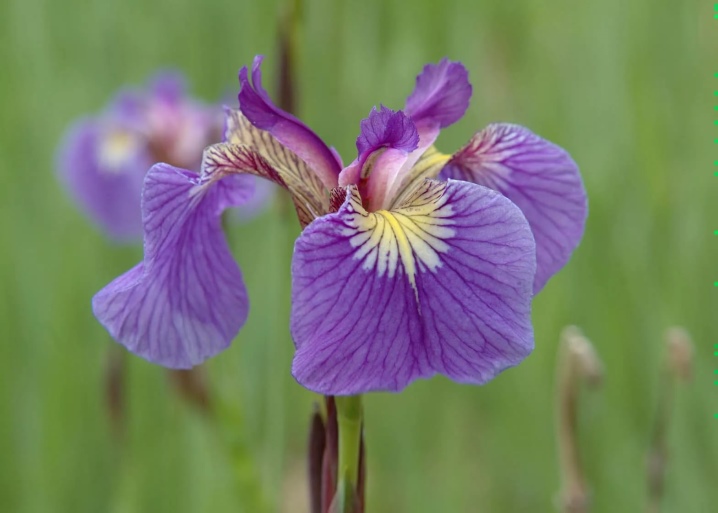
On each peduncle, only one flower is formed, which has a very bright color. In this case, it can be painted in virtually any color. In general, the botanical characteristic of this flower is similar to that of all irises.
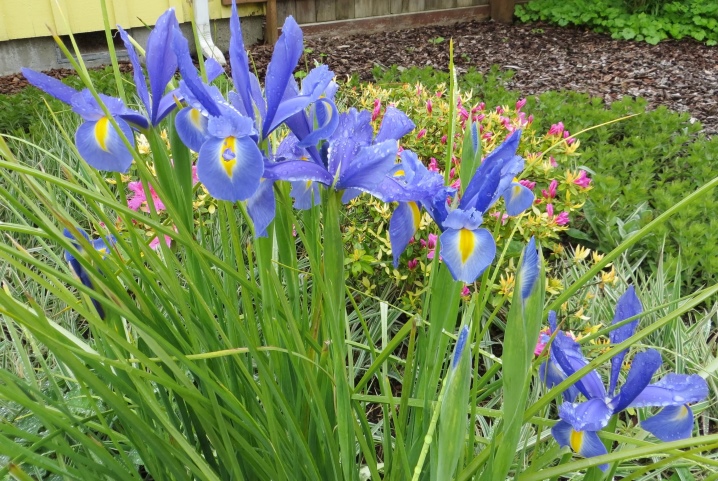
It is worth noting that it is the color of the buds that determines the varietal group. According to this criterion, they can be:
- blue;
- red;
- pink;
- mix;
- bicolors;
- purple;
- yellow.
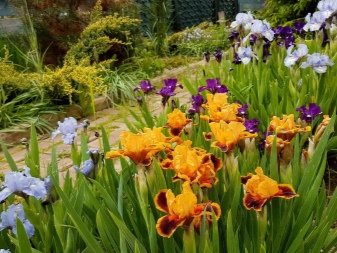

Depending on the region of growth, the Dutch iris begins to bloom in mid-May or June. On average, it takes no more than two weeks.
But it happens so violently and colorfully that many flower growers are ready to gladly make a lot of effort and spend time to enjoy the flowering of this culture.
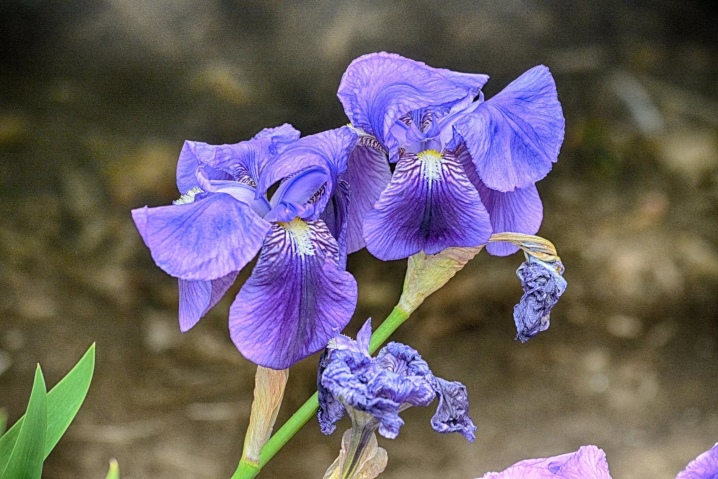
Varieties
Today there are several popular varieties of Dutch iris. They all differ from each other in their color of buds and flowers, and also have some differences in the flower itself.
- "Blue Magic". As it is already clear from its name, the color of the flower itself is rich blue. You can recognize this variety by its characteristic bright yellow vein on the petals. The bloom is massive, abundant and very bright. The flower stalk reaches a height of no more than 60 cm. It is this iris that enjoys great love of home gardeners.
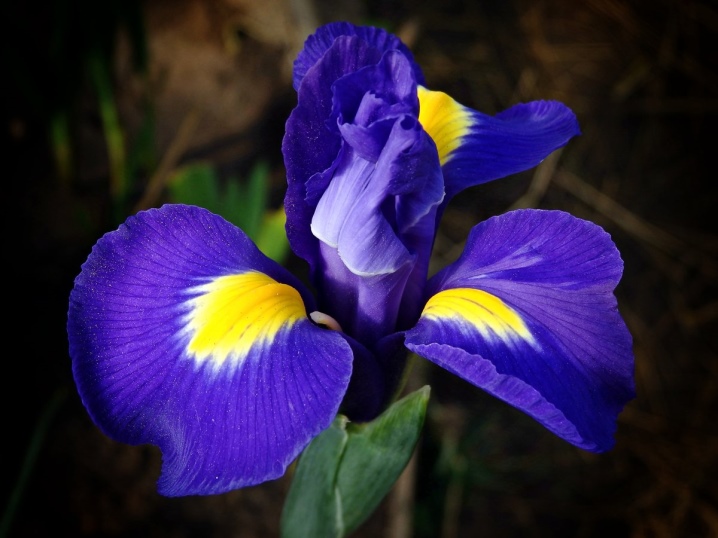
- Silver Beauty. There are also yellow veins on the petals, but the color of the flowers itself is more blue than blue.
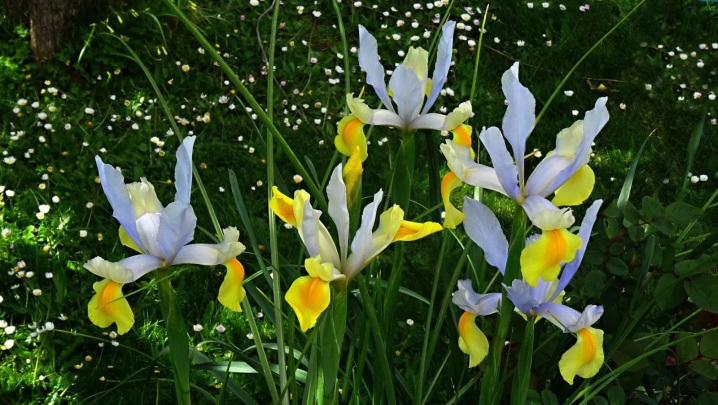
- "White Excelsior" - this is an amazingly delicate and at first glance fragile flower. Peduncles up to 65 cm high, with pure white flowers. The petals themselves are very delicate and slightly thinner than those of regular irises. They have a rather strong external resemblance to beautiful orchids, but the flowers of the Dutch iris "White Excelsior" are larger.
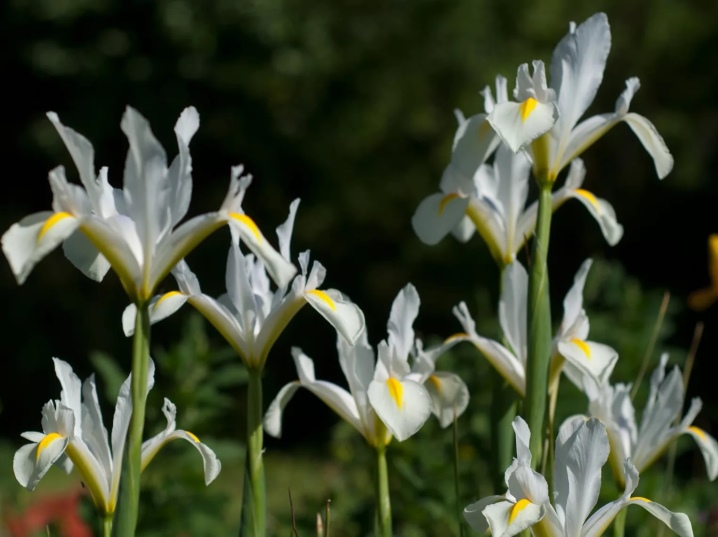
- "Red Amber" Is another beautiful perennial Dutch iris. The buds are large, rather lush. The color of the flowers is deep purple. The height of the peduncle is usually 60 cm, although sometimes there are plants in which this figure can reach 70 cm.The flowers have a unique double coloration, therefore they belong to the bicolor category - in the middle, near the pistil, the petals are painted in a bright yellow saturated color.

- Dutch iris "Ash Jam" Is another cultivar with deep purple flowers. In this case, the characteristic yellow vein of the petals is completely absent. The height of the peduncle reaches 55 cm. The flowering is exuberant and, unlike many other varieties of the Dutch iris, is rather long.
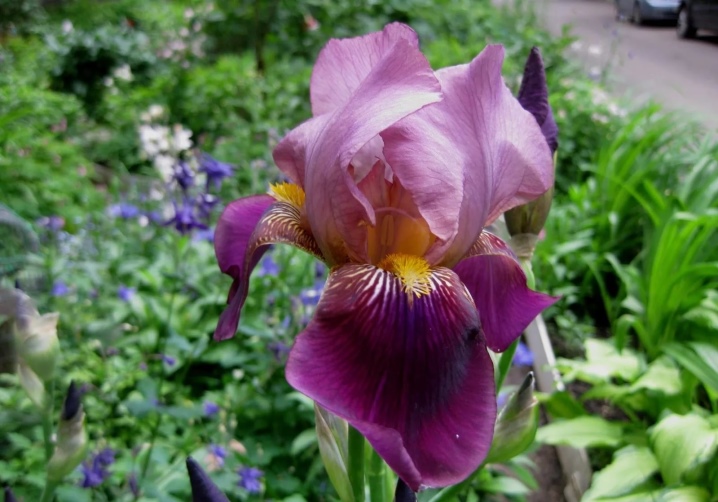
- "Discovery" - initially this variety was conceived as purple, but in the end it turned out just a mixture of colors that beckons with its beauty.Today, the Dutch iris of this variety can be dark purple, deep blue, and even purple-brown. All colors are bright, saturated, flowers are on a peduncle 60 cm high and delight the eye for almost 3 weeks.
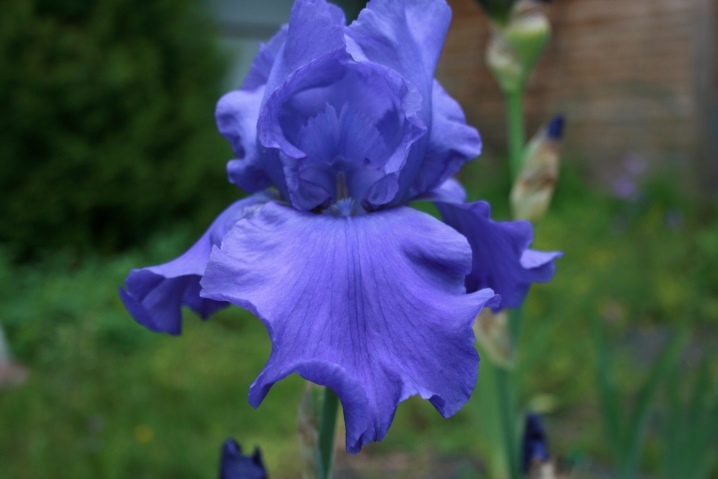
- Alaska - it is a pale white Dutch iris. Its distinctive feature is the presence of a bright yellow brushstroke on the petals at the very beginning. Peduncles are high - up to 70 cm in height, strong and erect. Mass flowering, lasting up to two weeks.
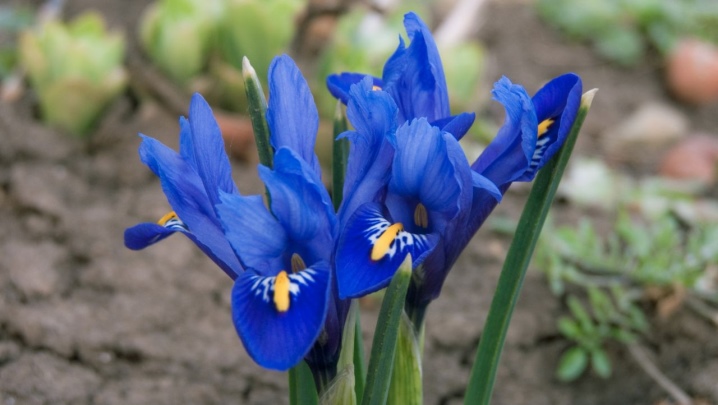
- Royal Yellow. A distinctive feature of this plant is its bulb, the length of which can reach 8 cm. The flowers are monochrome - bright yellow, bloom luxuriantly and profusely. The inner petals are vertical, the outer ones are horizontal. The diameter of one flower can reach 10 cm. It is this iris that can become the main decoration of any flower bed.
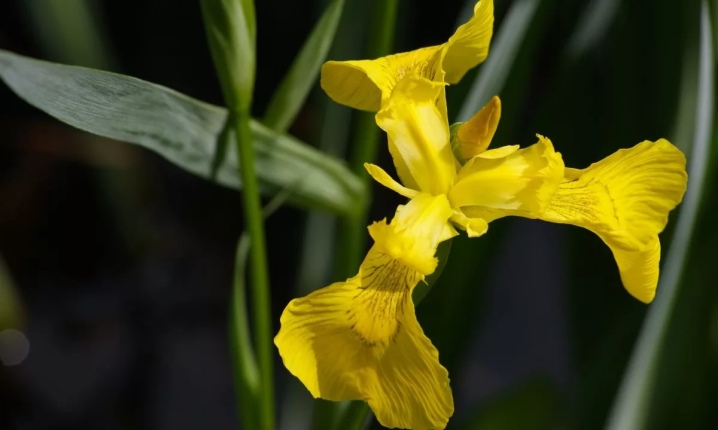
- Dutch iris "Golden Beauty". Peduncle 60 cm high, even, strong, erect. The bud is dense, which turns into a flower with delicate and beautiful yellow petals. Their distinctive feature is that in the center they are almost orange, and the closer to the edges of the petals, the weaker the intensity of their color becomes.

- "Symphony" - this is one of the brightest, lush and beautiful varieties of Dutch iris. The petals are of two colors - rich yellow and pure white. The upper petals are erect, bright, the lower ones are horizontal white. The peduncle is up to 65 cm high, and the diameter of the bud itself can reach 14 cm.
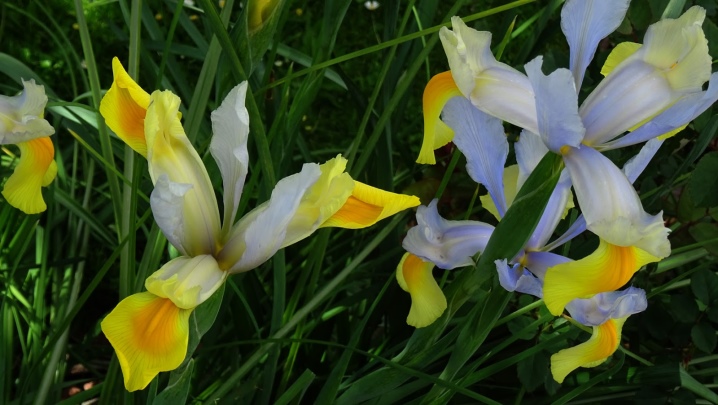
- Bronze Queen - This is a Dutch iris with a simple flower structure and a standard peduncle, reaching a height of 62 cm. Its peculiarity lies precisely in the color of the petals - the upper ones are dark purple, sometimes brown, and the lower ones are yellow or deep orange. The diameter of the flower is about 12 cm, and the duration of flowering can be up to 18 days.
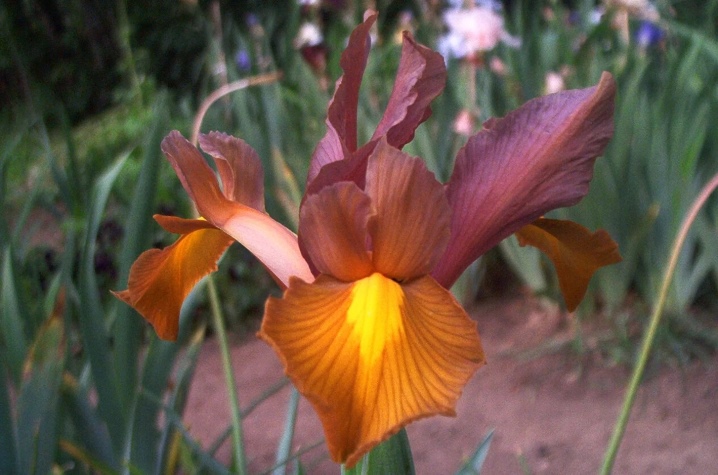
- "Mystic Beauty". This is a compact Dutch iris, the height of which ranges from 40 to 65 cm. The peduncle is one, strong, straight. Leaves are elongated, tapering towards the edge of growth. However, the highlight of this plant is precisely its flowers, which are painted in three colors at once. The upper petals are upright and painted in a beautiful dark purple color. The lower petals are horizontal and painted in two tones at once: the main part is orange-brown, and the central stroke is a bright yellow speck. It is "Mystic Beauty" that immediately attracts attention on any flower bed.
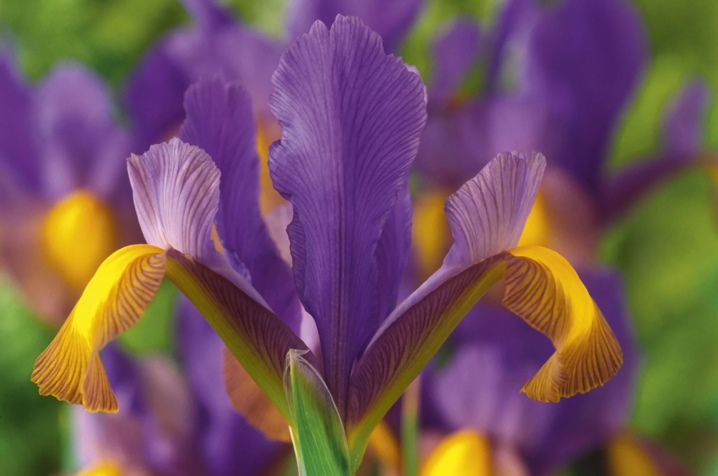
- "Sky beauty" - this is a novelty of selection. This iris has an unusual appearance and eye-catching color. The upper petals are smaller and narrower than the lower ones, and they have a deep blue color. The lower ones are wider, longer and convex. Their color is two-tone - a pale blue border and a bright yellow stroke in the center. The height of the plant itself is up to 65 cm. The duration of flowering can reach three weeks.
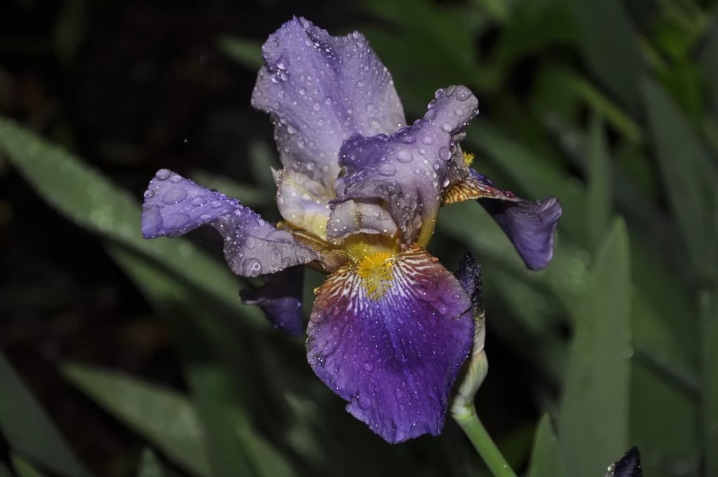
All these varieties of Dutch iris have not only a unique and charming appearance, but also a very delicate, but at the same time, a well-pronounced pleasant aroma. This will not only decorate the flower bed or area, but also aromatize the air around them.
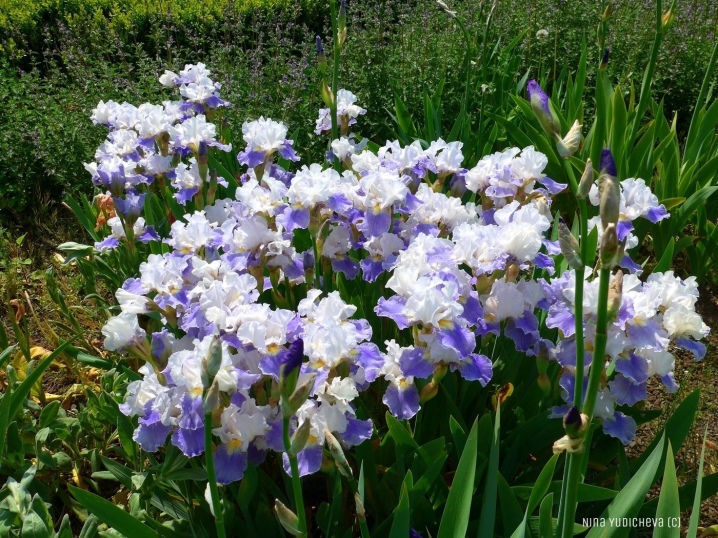
How to plant?
Many novice growers believe that it is the spring planting that is considered the most preferable for Dutch irises. Actually this is not true. Of course, these flowers can be planted in spring, but in this case it is not worth counting on their exuberant flowering in the first year of planting.
Experienced flower growers say that it is in the fall, from the beginning of September to the end of October, that it is best to plant the bulbs of this flower.
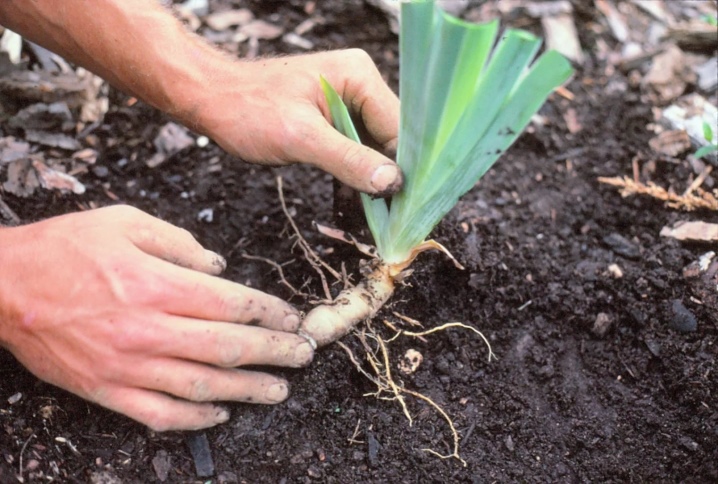
In this case, the sequence of actions should be as follows.
- Choosing the right seed. It is best to purchase Dutch iris bulbs from specialized nurseries or trusted stores.
- Soil preparation. These plants are extremely demanding on its composition, therefore, it is necessary to take care in advance of the correct fertilization and the creation of the best soil - it should be easily permeable and allow air to pass through well. But it is important to remember that you cannot use chemical fertilizers - iris does not tolerate them.
- Bulbs need to be disinfected... They are placed for 5 hours in a warm solution of potassium permanganate, after which they are laid out on fabrics and left in a ventilated room until completely dry.
- The soil in which the Dutch irises will be planted is also spilled warm solution of potassium permanganate.
- Now you need to make holes in the ground about 20 cm deep and on their bottom pour a sand cushion, which should occupy a third of this depth.
- Flower bulbs are installed in the sand, deepening them by a third of the height. The distance between the bulbs is about 12 cm.
- It is necessary to thoroughly shed the planting with warm water, and mulch on top. It is best to use old leaves, small pebbles and sod.
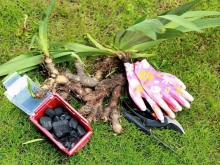

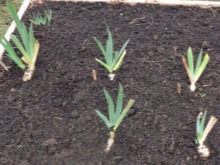
If, nevertheless, it is decided to plant Dutch irises in the spring, then the sequence of actions will be the same. True, before planting, each bulb must be carefully inspected for damage or rot.
But after planting, you should not mulch them - mulch will slow down the growth of flowers.
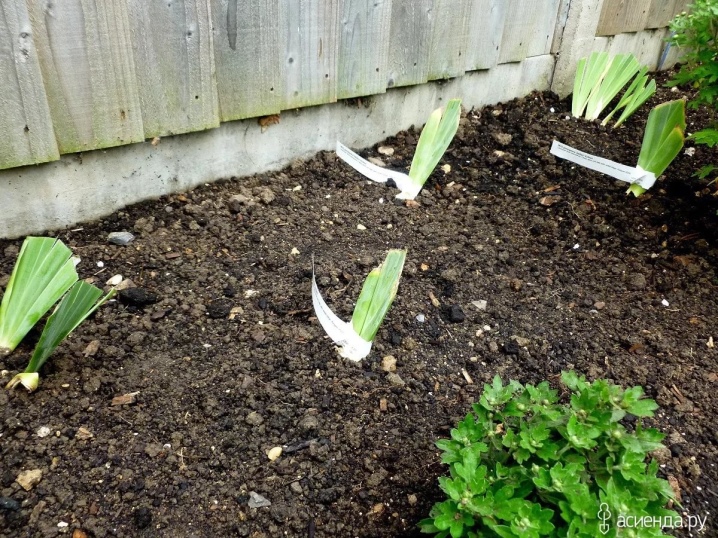
If the bulbs are planted not in open ground, but in closed, then instead of mulching, the planting material is sprinkled with a thin layer of soil and spilled again. And the bulbs themselves are planted so that their tip is visible on the surface. The best planting time is mid-January - early February.
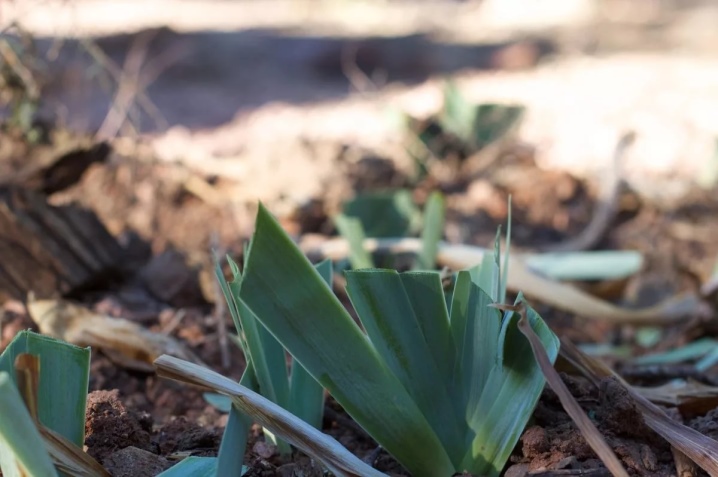
How to take care of it properly?
Regular maintenance of Dutch irises is pretty straightforward.
- It is necessary to ensure that the plants are in the shade most of the time. If necessary, you need to create artificial darkening for them.
- Watering should be regular, but not too abundant. During severe drought, irises should be sprayed with water, especially the flowers themselves.
- It is important to make sure that the Dutch irises do not grow too much. Therefore, at the beginning of autumn, it is necessary to thin them every year by digging out excess bulbs.

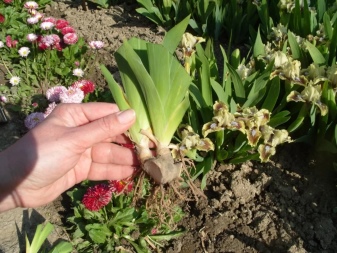
When it comes to feeding, it is best to use compost or humus. They must be brought in once a year until the moment when the peduncle is thrown out.
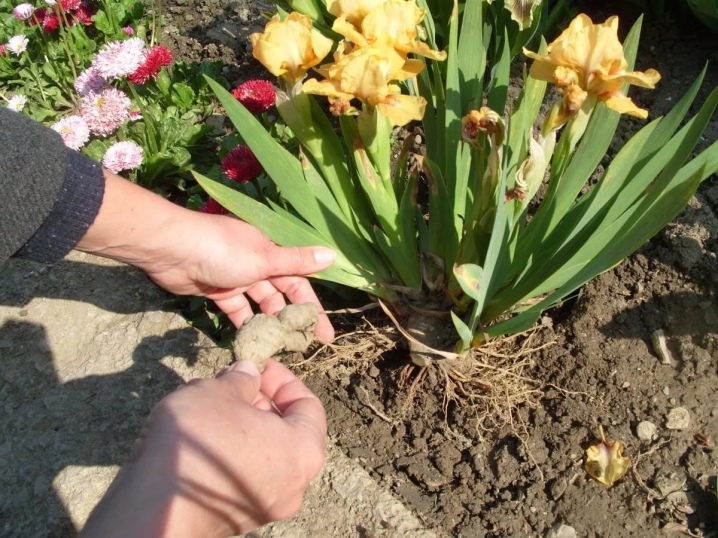
How to store bulbs in winter?
In order for irises to retain their qualities for a long time, it is best to dig them up for the winter. This must be done 30-35 days after the end of flowering.

If, together with the bulbs of adult plants, their children are dug up, then they should be carefully separated and laid out in one layer on a table in a dry ventilated area... The temperature in it should be 20-25 degrees.
The air must be dry. The bulbs are left to dry for 7-10 days.
After that, they are carefully examined, and healthy seed is laid out in one layer in cardboard boxes. They, in turn, are removed to a dark, dry room, the temperature in which is in the range from +15 to +20 degrees.
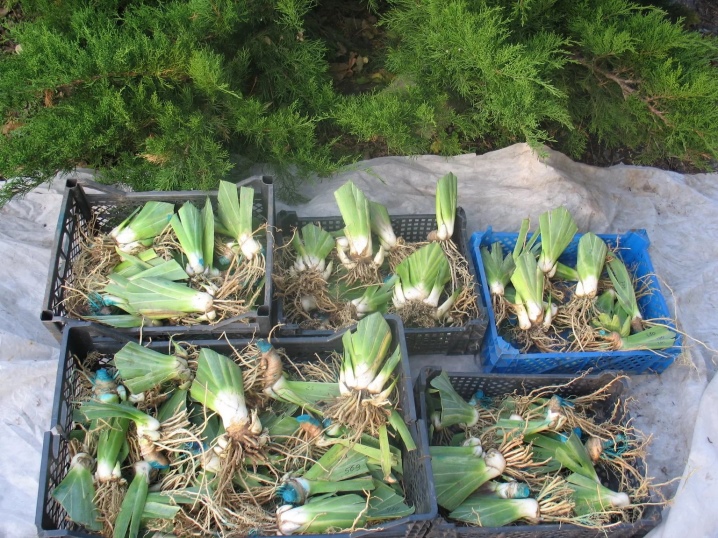
Such storage conditions help preserve Dutch iris bulbs until spring without any loss.

Examples in landscape design
Dutch irises are very popular today when decorating flower beds and flower beds both in private plots and in parks, squares and gardens. Combining different varieties of this flower with each other, you can create truly unique compositions.
- Such a path becomes the main decoration of any site or park. Tall flowers in combination with low-growing plants look stylish and beautiful. It is the Dutch irises that are best suited for dividing a site into zones or decorating pedestrian paths.
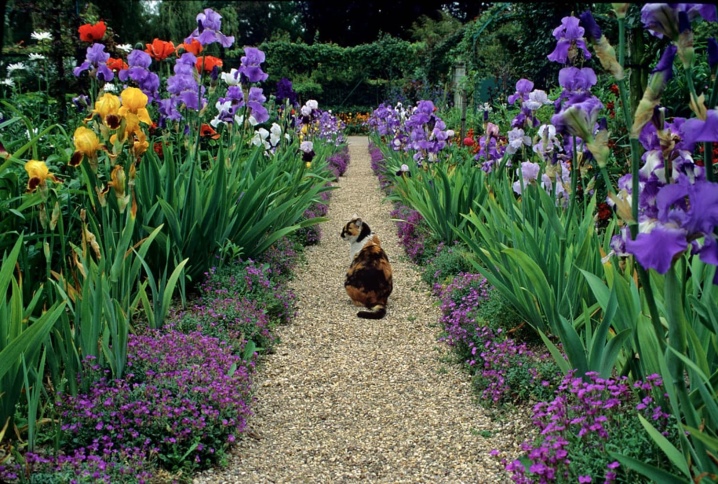
- Even the simplest flower bed, decorated with decorative or natural stones, will sparkle with new colors and become the main bright spot of the site if you plant Dutch irises of rich colors in it.
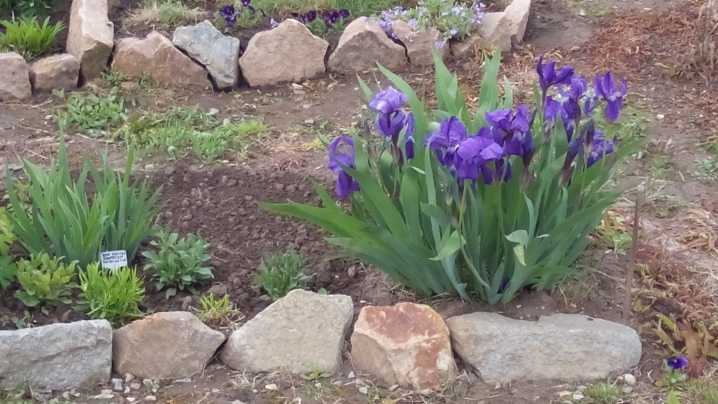
- Very beautiful and original can be decorated with irises and a small pond. Their rich color will help to highlight a small pond and decorate it at the same time.

The main feature of these amazing garden flowers lies in the fact that despite being unpretentious in care and cultivation, they delight and amaze everyone around them with their beauty.
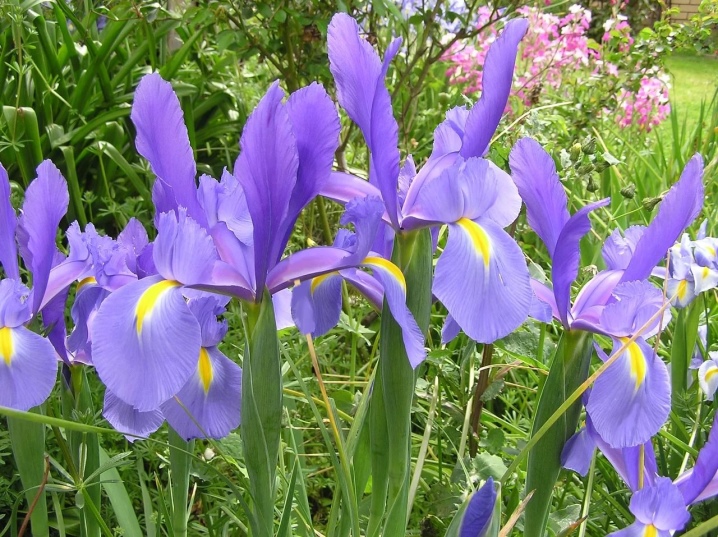
See below for more details.







































































































The comment was sent successfully.